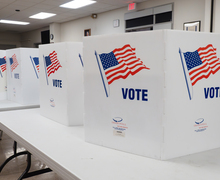Sex and Health : Gonna soak up some sun rays, gonna tell everyone to lather up throughout break
Spring Break should be called ‘sun hunt.’ For students deserting campus on a mass sun search, skin protection is not high on their agenda. But be warned: Being bronzed may help you look good, but it’s a major health crime.
Skin is the largest organ in the human body, so it deserves a bit of respect. When you come back from a day at the beach resembling a half-eaten croissant, you’re officially the victim of a UV radiation attack.
The U.S. Food and Drug Administration website warns UV radiation is invisible to the human eye, but it destroys cells in the epidermis, the upper layer of the skin. Blood rushes to the skin, white blood cells attack damaged cells and you end up looking flaky.
Even if you aren’t molting, having a deep tan isn’t healthy, either. Try telling that to the sun hunters who don’t fancy being a member of the Culkin clan. Michelle Gibbs, a junior physical education and health major, has been tanning since she was 16.
‘I know it sounds superficial, but I like being tan because it makes me feel good about myself. I feel like I look a lot better when I am tan,’ she said.
The FDA website states that increased levels of melanin, the chemical pigment responsible for hair and eye color, cause the darkening of skin tone. It’s simple biology, so it’s funny how tanning is a tool in the pursuit of beauty.
Vacation-based ‘melanin rivalry’ involves the daily pulling down of bikini strings, or swim shorts, to view ‘lines.’ Everyone has that friend who only sits in the sun for two hours but manages to look like an Oscar statuette. Everyone also knows a token pale person, like Jessie Petersen, who burns watching the weather forecast on television.
‘Pretty much any day in the summer I get burned, especially my shoulders and face,’ said Peterson, an undecided freshman in the College of Arts and Sciences.
It’s not just the members of the ghost brigade who need to be on guard. Blondes, redheads and families with a history of skin cancer should be extra careful, according to the FDA website.
In the run up to her Florida vacation, Gibbs has been heading to the tanning salon regularly. Gibbs likes to use sun beds before vacations so she’s not starting from scratch when she hits the beach. Even when she’s doesn’t have a vacation planned, she goes tanning every two weeks to maintain a good color.
Research performed by the University of Minnesota found tanning beds tripled the risk of melanoma, the deadliest form of skin cancer. If that isn’t enough to kick your addiction to lying in a well-lit coffin, try handing in tanning goggles for sunscreen. Once on the beach, apply a broad-spectrum sunscreen every two hours, the FDA website states. Check the bottle. If your sunscreen is less than SPF 15, chuck it and go invest in your skin’s future.
Between 10 a.m. and 4 p.m., UV levels are highest, according to the European Centre for Disease Prevention and Control website. If your shadow is shorter than you are, UV levels are high. It’s time to get out the sun, or put on a serious straw hat. Drinking lots of water will also prevent you from drying out. If you go skinny-dipping at the nudist beach or play a vigorous game of beach volleyball, reapply sunscreen once you get out of the water. Birth control pills and antibiotics can also increase sensitivity to UV radiation, according to the FDA.
And if you’re like a certain sex and health columnist and you’re staying in Syracuse for spring break, never fear. Tanning is one instance when ‘faking it’ is kind of cool. Fake tanning products, like lotions and sprays, can give you a UV-free glow — just don’t use Otto the Orange as your muse.
Iona Holloway is a magazine journalism and psychology major. She will attempt to practice safe sunning on the shores of Oneida Lake next week. She can be reached at ijhollow@syr.edu.
Published on March 6, 2012 at 12:00 pm





